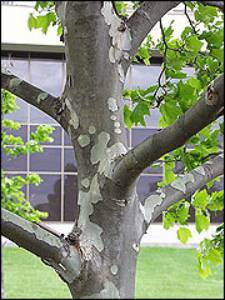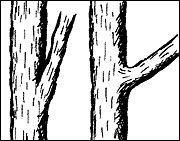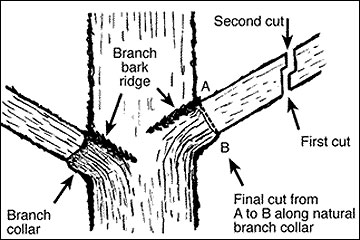Pruning Shade Trees

Care and pruning shade trees are slightly different from pruning fruit trees. Once a shade tree is established and has been in the ground for several years, it typically requires very little pruning, especially if you took the time to develop a good structure while the tree is young. Here are a few guidelines for pruning shade trees:
- Remove branches that are rubbing to prevent injury and future disease issues.
- Remove competing “leaders” to allow for one central leader at the top of the tree (some species naturally have multiple leaders, so this may not apply to all trees)
- Develop the “scaffold” branches. The scaffold branches will form the base structure of the tree and eventually develop into the crown as the tree gets bigger. These branches should be spaced fairly evenly around the trunk, be slightly smaller in diameter of the trunk and have a strong attachment to the tree. Developing this structure can help alleviate issues down the road. Leave lower branches on for several years, even if they eventually get in the way of mowing or sidewalks to help with trunk development. (See photo above)
- Remove dead, broken, or diseased branches regularly to prevent the spread of disease and allow the tree to heal. Also, remove any potentially hazardous limbs that are low-hanging and could block traffic or walking paths.
- Remove branches with narrow crotches. Branches like the one in the picture with a narrow crotch
 angle tend to have bark inside the attachment, ultimately weakening that area. Branches with tight angles are less flexible during ice or wind storms and more likely to break. You can change the angle using spreaders on young branches but not older ones.
angle tend to have bark inside the attachment, ultimately weakening that area. Branches with tight angles are less flexible during ice or wind storms and more likely to break. You can change the angle using spreaders on young branches but not older ones. - Never remove more than 20-30% of the tree's canopy at one time. This reduces the tree's ability to photosynthesize and grow properly.
- Topping a tree is not recommended and should only be done in a few cases. Topping can result in fast, weak growth, and the large wounds never heal properly, leading to disease and insect issues. If you must drastically shrink the size of a tree, prune the branch back to where it meets another branch, or remove the tree altogether and plant something that won't get as big.
 The best time to prune most trees is in the spring before they leaf out for the year. The exceptions are Maple and Birch trees, which can "bleed" excessively if pruned early in the year. Depending on the homeowner's preference, those trees can be pruned after they have leafed out or before. It's best to avoid pruning in the late summer or early fall since this can take nutrients from the tree as it prepares to overwinter or cause growth late in the fall, which could freeze. Try to prune branches close to the trunk and at the collar, which helps the tree heal faster. If you are cutting a bigger branch, use the three-cut method to avoid tearing the bark. To avoid tearing the bark, prune large branches in three cuts. Make the first and second cuts about 12 inches from the trunk. Make the third cut near the branch collar at 45 degrees to the trunk.
The best time to prune most trees is in the spring before they leaf out for the year. The exceptions are Maple and Birch trees, which can "bleed" excessively if pruned early in the year. Depending on the homeowner's preference, those trees can be pruned after they have leafed out or before. It's best to avoid pruning in the late summer or early fall since this can take nutrients from the tree as it prepares to overwinter or cause growth late in the fall, which could freeze. Try to prune branches close to the trunk and at the collar, which helps the tree heal faster. If you are cutting a bigger branch, use the three-cut method to avoid tearing the bark. To avoid tearing the bark, prune large branches in three cuts. Make the first and second cuts about 12 inches from the trunk. Make the third cut near the branch collar at 45 degrees to the trunk.
There aren’t any hard and fast rules when pruning shade trees but there are some tricks and tips that can help make the process faster. Remember, with any pruning activity, safety first anytime you are pruning or trimming trees.

Have questions? Contact our office where our Horticulture Extension Agent will assist you with questions.
Phone: (316) 321-9660
Email: callae@ksu.edu